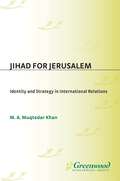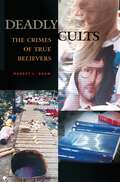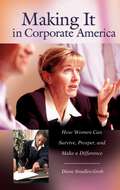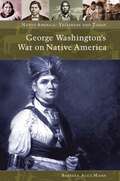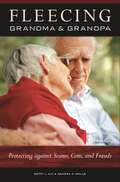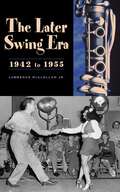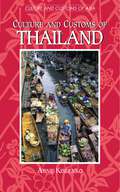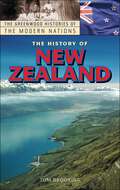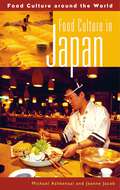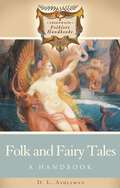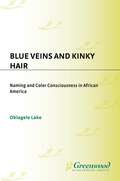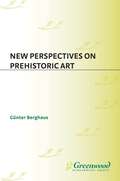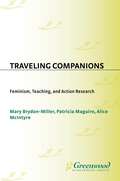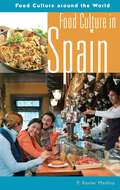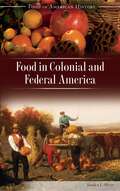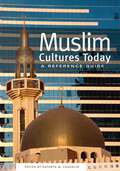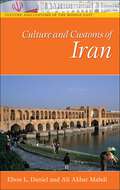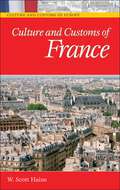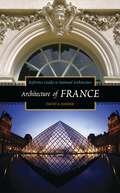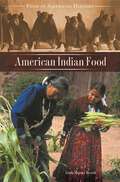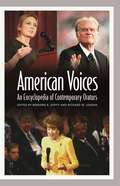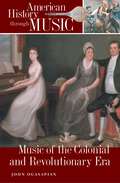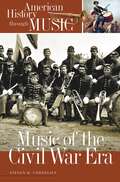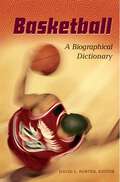- Table View
- List View
Jihad for Jerusalem: Identity and Strategy in International Relations (Praeger Security International Ser.)
by M.A. KhanJihad for Jerusalem explores the agent-structure dynamics in world politics and advances a constructivist theory of choice that explains the role of identity, culture, religion, and other core values in international politics. The struggle for Jerusalem by Iran, Saudi Arabia, Jordan, and Israel is the empirical space where the dynamics between reason and identity, values and strategies, is explored.Jihad for Jerusalem advances a theory of agency in international politics. This theory of agency is based on a reconstituted constructivist paradigm. The theory is tested by an examination of the foreign policy decision making of Iran, Israel, Jordan, and Saudi Arabia towards Israel from 1967-1997. The book uses the foreign policy of these states as cases to test the tension between religion and rationality, between identity and reason, between power and morality, and advances a constructivist theory of choice that explains the importance of the role of culture, religion, identity, and core values in international politics. Anyone interested in international relations theory and the convoluted politics of the Middle East, will find this book intriguing reading.
Deadly Cults: The Crimes of True Believers
by Robert L. SnowHow does a Vampire Cult differ from a Satanic Cult? How do seemingly normal or ordinary citizens suddenly find themselves committed to a group whose leader promotes criminal activities and isolation from families and friends? What should you do if a loved one becomes indoctrinated by a potentially dangerous cult? This book focuses on various cults and their often criminal belief systems. Most readers are shocked by stories of mass suicides and ritualized cult killings, but few understand how such crimes come to be committed. Snow, a seasoned police officer with experience working on cult crimes, examines those cults that commit offenses from murder and fraud to kidnapping and sexual assault.By providing specific accounts of dangerous cults and their destructive acts, Snow illustrates how seemingly innocent groups can turn pernicious when under the sway of a charismatic leader with an agenda, or when members take things too far. He offers advice on how to avoid falling victim to cult indoctrination, concluding with chapters on how to identify cults, how to protect yourself and your family, and what to do if a loved one is ensnared by such a group.
Making It in Corporate America: How Women Can Survive, Prosper, and Make a Difference
by Diane Smallen-GrobThis book offers tips, pointers, and advice for women at all levels of the corporate world. Some how-to-succeed books for women offer helpful techniques and strategies to improve a career or fatten a paycheck. Nearly all are written by journalists, academics, and researchers, or by women who started their business careers at mid-level or higher because of previous experience. Yet few of these authors have experienced the humiliation, the apprehension, the dread, the fears, the naivete and discrimination that women in the trenches understand all too well. This book is based the personal experience of the author and the women she interviewed, making it a unique and practical guide to dispelling the fears that women have about asserting themselves in the workplace.Diane Smallen-Grob presents interviews with women executives who struggled for decent jobs and progressive careers in a wide variety of industries. The book focuses on what women did to succeed, where they are now, and—most importantly—what helped them rise among the ranks. The women share their experiences, insights, and stories. Common-sense pointers are offered for surviving the grueling boot camp that all women in business must endure. Women of every generation need to know that history can and does repeat itself, and that they must be forewarned, aware of the signs, and strong enough to make the best choices during the long climb to the top.
George Washington's War on Native America (Native America: Yesterday and Today)
by Barbara Alice MannThe Revolutionary War is ordinarily presented as a conflict exclusively between colonists and the British, fought along the northern Atlantic seacoast. This important work recounts the tragic events on the forgotten Western front of the American Revolution—a war fought against and ultimately won by Native America. The Natives, primarily the Iroquois League and the Ohio Union, are erroneously presented in history texts as allies (or lackeys) of the British, but Native America was working from its own internally generated agenda: to prevent settlers from invading the Old Northwest. Native America won the war in the West, holding the land west and north of the Allegheny-Ohio River systems. While the British may have awarded these lands to the colonists in the Treaty of Paris, the Native Americans did not concur.Throughout the war, the unwavering goal of the Revolutionary Army, under George Washington, and their associated settler militias was to break the power of the Iroquois League, which had successfully held off invasion for the preceding two centuries, and the newly formed Ohio Union. To destroy the Natives in the way of land seizure, Washington authorized a series of rampages intended to destroy the League and the Union by starvation. Food, livestock, homes, and trees were destroyed, first in the New York breadbaskets, then in the Ohio granaries—spreading famine across Native lands. Uncounted thousands of Natives perished from New York to Pennsylvania to Ohio. This book tells how, in the wake of the massive assaults, the Natives held back the American onslaught.
Fleecing Grandma and Grandpa: Protecting against Scams, Cons, and Frauds (Non-ser.)
by Betty L. Alt Sandra K. WellsFalling for a scam or con is humiliating for anyone, and can have terrible consequences. But for the elderly, being the victim of fraud can be disastrous, and they are the most common and vulnerable targets of everyday scams, cons, and frauds. From identity theft to gambling scams, from power of attorney issues to pyramid schemes, there is no dearth of creativity in the ways some criminals will relieve the elderly from their money and their homes. Here, Alt and Wells describe the most common scams, offer the stories of actual victims, and detail ways to protect yourself and your family from becoming easy targets.What makes the elderly such easy marks for con artists? How can they avoid the common traps? Knowing about them is one place to start, and this book helps readers to understand and identify the most common scams perpetrated against the elderly. Because such cons are so hard to prosecute, it is important to know the methods criminals employ to separate innocents from their hard-earned money. This lively, vivid account of one of the most insidious forms of crime will help families and individuals protect themselves and their loved ones from the machinations of those who view them as easy marks.
The Later Swing Era, 1942 to 1955
by Lawrence McClellanToday's Retro Swing bands, like the Squirrel Nut Zippers and the Brian Setzer Orchestra, all owe their inspiration to the original masters of Swing. This rich reference details the oeuvre of the leading Swing musicians from the WWII and post-WWII years. Chapters on the masters of Swing (Ella Fitzgerald, Woody Herman, Billy Strayhorn), the legendary Big Band leaders (such as Les Brown, Dizzy Gillespie, Stan Kenton, Buddy Rich, Vaughan Monroe, etc.), vocalists (including Cab Calloway, Billie Holiday, Peggy Lee, Frank Sinatra, Sarah Vaughn, Dinah Washington), and Small Groups (Louis Jordan, Art Tatum, Charlie Ventura, etc.) introduce these timeless musicians to a new generation of musicians and music fans. An opening chapter recounts how the cultural changes during the war and postwar years affected performers-especially women and African-Americans-and an A-to-Z appendix provides synopses of almost 700 entrants, including related musicians and famous venues. A bibliography and subject index provide additional tools for those researching Swing music and its many roles in mid-century American culture.This volume is a perfect sequel to Dave Oliphant's The Early Swing Era: 1930 to 1941. Together, these books provide the perfect reference guide to an enduring form of American music.
Culture and Customs of Thailand (Culture and Customs of Asia)
by Arne KislenkoThailand is rapidly industrializing, dramatically improving the living standards of its people, and gradually developing a more democratic society. Despite such profound changes, traditional Thai culture has not only survived, but has also, in many respects, prospered. Although famous for its food, and despite its increasing popularity as a tourist destination, Thailand remains relatively unknown to most Westerners. Culture and Customs of Thailand presents the traditional culture and customs against the backdrop of modern times.Thailand has always been an important Southeast Asian country. With a long-reigning monarchy, it is the only country in the region that has never been colonized by a Western power or suffered bloody revolutions and wars. It was the first Asian country to establish diplomatic relations with the United States, and has remained a constant ally. Thailand has emerged as a considerable economic force as the world's largest rice and rubber producer and remains a regional political power. Against this historical framework, Kislenko deftly introduces the traditional and modern strands of the dominant Buddhist faith and other religions, such as animism. Coverage includes literature, the arts, architecture-including the Thai Wat-food and dress, gender and marriage, festivals and fun, and social customs. Kislenko also balances the portrait with discussions of threats from globalization, AIDS and sex tourism, the drug trade, and corruption in business and government. Evocative photos, a country map, a timeline, and a chronology complete the coverage. This reference is the best source for students and general readers to gain substantial, sweeping insight into the Thais and their land of smiles.
The History of New Zealand (The Greenwood Histories of the Modern Nations)
by Tom BrookingWith its closest neighbor some 1,200 miles away, New Zealand is one of the most geographically isolated countries in the world. Its remoteness led to its relatively late settlement. Brooking traces New Zealand from its earliest Maori settlers to issues in 2003, covering intertribal relations, the effects of European contact, the challenges of globalization, and more. The volume includes a timeline of historical events, biographical entries of notable people in the history of New Zealand, a glossary of Maori terms, and a bibliographic essay.With its closest neighbor some 1,200 miles away, New Zealand is one of the most geographically isolated countries in the world. Its remoteness led to its relatively late settlement. Brooking traces New Zealand from its earliest Maori settlers to issues in 2003, covering intertribal relations, the effects of European contact, the challenges of globalization, and more. The volume includes a timeline of historical events, biographical entries of notable people in the history of New Zealand, a glossary of Maori terms, and a bibliographic essay.This concise, engagingly written volume is ideal for students and general interest readers seeking information on New Zealand's history.
Food Culture in Japan (Food Culture around the World)
by Michael Ashkenazi Jeanne JacobAmericans are familiarizing themselves with Japanese food, thanks especially sushi's wild popularity and ready availability. This timely book satisfies the new interest and taste for Japanese food, providing a host of knowledge on the foodstuffs, cooking styles, utensils, aesthetics, meals, etiquette, nutrition, and much more. Students and general readers are offered a holistic framing of the food in historical and cultural contexts. Recipes for both the novice and sophisticated cook complement the narrative.Japan's unique attitude toward food extends from the religious to the seasonal. This book offers a contextual framework for the Japanese food culture and relates Japan's history and geography to food. An exhaustive description of ingredients, beverages, sweets, and food sources is a boon to anyone exploring Japanese cuisine in the kitchen. The Japanese style of cooking, typical meals, holiday fare, and rituals—so different from Americans'—are engagingly presented and accessible to a wide audience. A timeline, glossary, resource guide, and illustrations make this a one-stop reference for Japanese food culture.
Folk and Fairy Tales: A Handbook (Greenwood Folklore Handbooks)
by D. L. AshlimanJust about everyone is familiar with folk and fairy tales. Children learn about them from parents, teachers, and other adults, while researchers study these tales at colleges and universities. At the same time, folk and fairy tales are inseparable from everyday life and popular culture. Movies, music, art, and literature offer imaginative retellings and interpretations of fairy and folk tales. But despite the pervasiveness of this folklore type, most people have only a vague understanding of these tales. This reference is a convenient introduction to folk and fairy tales for students and general readers.Written by a leading authority, this handbook offers a broad examination of folk and fairy tales as a folklore type. It looks at tales from around the world and from diverse cultures. The volume defines and classifies folk and fairy tales and analyzes a number of examples. It studies the varied manifestations of fairy and folk tales in literature and culture and reviews critical and scholarly approaches to this folklore genre. The volume also includes a glossary and extensive list of works for further reading.
Blue Veins and Kinky Hair: Naming and Color Consciousness in African America (Non-ser.)
by Obiagele LakeThe author explores how Africans in America internalized the negative images created of them by the European world, and how internalized racism has worked to fracture African American unity and thereby dilute inchoate efforts toward liberation. In the late 1960s, change began with the Black Is Beautiful slogan and new a consciousness, which went hand in hand with Black Power and pan-African movements. The author argues that for any people to succeed, they must first embrace their own identity, including physical characteristics. Naming, skin color, and hair have been topical issues in the African American community since the 18th century. These three areas are key to a sense of identity and self, and they were forcefully changed when Africans were taken out of Africa as slaves.The author discusses how group and personal names, including racial epithets, have had far-reaching and deep-seated effects on African American self perception. Most of her attention, however, is focused on issues of physical appearance which reflect a greater or lesser degree of racial blending. She tells us about exclusive African American organizations such as The Blue Vein Society, in which membership was extended to African Americans whose skin color and hair texture tended toward those of European Americans, although wealthy dark-skinned people were also eligible. Much of the book details the lengths to which African American women have gone to lighten their complexions and straighten their hair. These endeavors started many years ago, and still continue, although today there is also a large number of women who are adamantly going natural. Her historical look at the cultural background to African American issues of hair and skin is the first monograph of its kind.
New Perspectives on Prehistoric Art (Non-ser.)
by Gunter BerghausFollowing the discovery of Franco-Caribbean cave art in the nineteenth century, standard interpretations of these works usually revolved around hunting, magic, and fertility cults. Orthodox positions such as these have weighed heavily on later generations of art historians, archaeologists, and anthropologists, even those whose views dissented from those of their predecessors. In the last few decades, however, new approaches to cave art, often based on discoveries made in Africa, Asia, Australia, North America, and the Arctic region, have produced new insights into possible meanings and functions of prehistoric paintings and sculptures. This new collection of essays explores these insights, gathering the observations of eight experts from a variety of disciplines, and examining some of the social and spiritual functions of a variety of artistic genres ranging from 40,000 B.C. to 5,000 B.C.These insights, which derive from evolutionary biology, feminist scholarship, ritual studies, and new modes of anthropology, argue collectively that prehistoric art was a culture-specific form of communication that should be interpreted in the social context of early hunger-gatherer societies and should not be measured with the criteria and paradigms of modern art. Essential reading for anyone interested in prehistoric art or its cultural implications, this volume represents a bold step forward in the research and analysis of the very first artists.
Traveling Companions: Feminism, Teaching, and Action Research (Non-ser.)
by Mary Brydon-Miller Patricia Maguire Alice McIntyreThis book explores the ways in which a diverse group of feminist and participatory action researchers experience, create meaning,and respond to the challenges of engaging in collaborative processes of reflection, action, and change.While headed in similar directions, rarely have feminist researchers and participatory action researchers acknowledged each other as collaborators with mutually important contributions to the journey. Through the work presented in this volume, the contributors hope to influence feminist scholarship to be more participatory and action-oriented, and participatory action research to be more grounded in feminist theories and values.This book has two distinct yet interrelated and intertwining aims. First, it creates a space for a diverse group of educators, researchers, and scholars to grapple with the multiple and complex issues that are threaded throughout feminist and action research. Second, it seeks to examine how action research and feminist research can complement each other in developing strategies for engaging in collaborative research that is rooted in activism and productive change.
Food Culture in Spain (Food Culture around the World)
by F. Xavier Ph.D.Spanish food culture has evolved around strong regional cuisines and representative elements. This volume offers an overview of Spanish food and eating habits, taking into account a long and complex history, plus distinctive social, cultural, linguistic, geographic, political, and economic characteristics. Spain's location at the crossroads of Europe and North Africa has made it a gastronomic melting pot, with Arab influences and New World ingredients particularly noted. Readers will learn about the unique food culture in each region and how food practices and dishes in the Iberian Peninsula have developed over the centuries. Typical dishes and drinks, especially the Spanish wines, are described in context, with many accompanying recipes.Gastronomy in Spain has always been of utmost importance. Recently, the new Spanish gastronomy has taken center stage with internationally recognized chefs. Spaniards are shown to be extremely social eaters and drinkers who like to eat out. The everyday routine of eating out, such as at work and school, is clarified as well. Home cooking and the Spanish kitchen get special attention. Finally, although Spanish food has always been associated with the highly touted Mediterranean diet, health concerns about current eating trends are discussed. A timeline, a chronology, and illustrations round out the coverage.
Food in Colonial and Federal America (Food in American History)
by Sandra OliverThe success of the new settlements in what is now the United States depended on food. This book tells about the bounty that was here and how Europeans forged a society and culture, beginning with help from the Indians and eventually incorporating influences from African slaves. They developed regional food habits with the food they brought with them, what they found here, and what they traded for all around the globe. Their daily life is illuminated through descriptions of the typical meals, holidays, and special occasions, as well as their kitchens, cooking utensils, and cooking methods over an open hearth. Readers will also learn how they kept healthy and how their food choices reflected their spiritual beliefs.This thorough overview endeavors to cover all the regions settled during the Colonial and Federal. It also discusses each immigrant group in turn, with attention also given to Indian and slave contributions. The content is integral for U.S. history standards in many ways, such as illuminating the settlement and adaptation of the European settlers, the European struggle for control of North America, relations between the settlers from different European countries, and changes in Native American society resulting from settlements.
Muslim Cultures Today: A Reference Guide
by Kathryn M. CoughlinThere is strong demand for current, accurate, and objective information about Islamic societies and Muslims around the world. This is the first survey for a general audience of key current topics in 16 countries with significant Muslim populations. Each chapter covering a country contains the following narrative elements: Overview (statistics, demographics of followers, brief history of their life there); Political Impact; Women's Status; Special Issues in the News; Notable People (biographical profiles); and Resource Guide, with Suggested Reading, Films/Videos, Websites, and Organizations. The content ties in to World History standards to help analyze connections between globalizing trends in culture in the late 20th century and dynamic assertions of traditional cultural identity and distinctiveness, as well as to the Global Connections part of Social Studies standards.This will be essential reading for those desiring a one-volume resource about hot spots in the news today. Countries profiled include Afghanistan, Albania, Bosnia and Herzogovina, Egypt, Ethiopia, India, Indonesia, Iran, Iraq, Nigeria, Pakistan, Russia, Saudi Arabia, Sudan, Turkey, and Uzbekistan. Photos and maps help to put the narrative in perspective.
Prisons and Prison Systems: A Global Encyclopedia (Non-ser.)
by Mitchel P. RothPrisons have undoubtedly changed over the years, as have penal practices in general, though more so in some countries than others. Prisons and prison systems have long been an overlooked part of criminal justice research, and as a result, limited material is available on many institutions. This comprehensive encyclopedia provides a historical overview of institutions and systems around the world, as well as penal theories, prisoner culture and life, and notable prisoners and personnel.Readers will find a plethora of information including material on such famous prisons as the Tower of London and Alcatraz, as well as on such topics as boot camps and parole. Other entries include Devil's Island, supermaximum prisons, Nelson Mandela, Pennsylvania system, and Amnesty International. Numerous appendixes list famous prisoners, prison museums, prison slang, and more.
Culture and Customs of Iran (Culture and Customs of the Middle East)
by Elton L. Daniel Ali Akbar MahdiIran is often a hotspot in the news, and the Muslim state is usually negatively portrayed in the West. Culture and Customs of Iran rejects facile stereotyping and presents the rich, age-old Persian culture that struggles with pressures of the modern world. This is the first volume in English to reveal the important sociocultural facets of Iran today for a general audience in an objective fashion. Authoritative, substantive narrative chapters cover the gamut of topics, from religion and religious thought to Iranian cuisine and festivals.
Culture and Customs of France (Culture and Customs of Europe)
by W. Scott Ph.D.The French are of perennial interest, for, among other things, their style, their cuisine and wine, and their cultural output. Culture and Customs of France is a thoroughly jam-packed narrative through the glories that France continues to offer the world. The volume is a boon for preparing country reports, a must-read for travelers, and perfect for culture studies. Chapters on the land, people, and history, religion, social customs, gender, family, and marriage, cinema and media, literature, food and fashion, architecture and art, and performing arts are current and pleasurable to read.
Architecture of France (Reference Guides to National Architecture)
by David A. HanserCovering all regions of France—from Avignon's Palace of the Popes to Versailles' Petit Trianon—and all periods of French architecture—from the Roman theater at Orange to the Arc de Triomphe in Paris—this volume examines more than 60 of France's most important architectural landmarks. Writing in a clear and engaging style, David Hanser, professor of architecture at Oklahoma State University, describes the features, functions, and historical importance of each structure. Besides identifying location, style, architects, and periods of initial construction and major renovation, the cross-referenced and illustrated entries also highlight architectural and historical terms explained in the Glossary and conclude with a useful listing of further readings. The volume also offers ready-reference lists of entries by location, architectural style, and time period, as well as a general bibliography, a subject index, and a detailed introductory overview of French architecture.Entries cover major architectural structures as well as smaller sites, including everything from the Cathedral of Notre Dame to Metro (subway) stations. Ideal for college and high school students alike, this comprehensive look at the architecture of France is an indispensible addition to any shelf.
American Indian Food (Food in American History)
by Linda Murray BerzokThis, the first, in-depth survey of Native American Indian foodways is an amazing chronicle of both human development over thousands of years and American history after the European invasion. It sheds light not only on this group and their history but on American food culture and history as well. For thousands of years an intimate relationship existed between Native Americans and their food sources. Dependence on nature for subsistence gave rise to a rich spiritual tradition with rituals and feasts marking planting and harvesting seasons. The European invasion forced a radical transformation of the indigenous food habits. Foodways were one of the first layers of culture attacked. Indians were removed from their homelands, forced to cultivate European crops such as wheat and grapes, new animals were introduced, and the bison, a major staple in the Great Plains and West, was wiped out. Today, American Indians are trying to reclaim many of their food traditions. A number of their foodways have become part of the broader American cookbook, as many dishes eaten today were derived from Native American cooking, including cornbread, clam chowder, succotash, grits, and western barbeque.The story of Native American foodways presented here is an amazing chronicle of both human development over thousands of years and American history after the European invasion. Through cultural evolution, the First Peoples worked out what was edible or could be made edible and what foods could be combined with others, developed unique processing and preparation methods, and learned how to preserve and store foods. An intimate relationship existed between them and their food sources. Dependence on nature for subsistence gave rise to a rich spiritual tradition with rituals and feasts marking planting and harvesting seasons. The foodways were characterized by abundance and variety. Wild plants, fish, meat, and cultivated crops were simply prepared and eaten fresh or smoked, dried, or preserved for lean winters. The European invasion forced a radical transformation of the indigenous food habits. Foodways were one of the first layers of culture attacked. Indians were removed from their homelands, forced to cultivate European crops, such as wheat and grapes, new animals were introduced, and the bison, a major staple in the Great Plains and West, was wiped out. Today, American Indians are trying to reclaim many of their food traditions. Other traditions have become part of the broader American cookbook, as many dishes eaten today were derived from Native American cooking, including cornbread, clam chowder, succotash, grits, and western barbeque.The scope is comprehensive, covering the six major regions, from prehistory until today. Chapters on the foodways history, foodstuffs, food preparation, preservation, and storage, food customs, food and religion, and diet and nutrition reveal the American Indians' heritage as no history can do alone. Examples from many individual tribes are used, and quotations from American Indians and white observers provide perspective. Recipes are provided as well, making this a truly indispensable source for student research and general readers.
American Voices: An Encyclopedia of Contemporary Orators (Non-ser.)
by Bernard K. Duffy Richard LeemanContemporary public speaking remains an important part of our national life and a substantial force in shaping current events. Many of America's most important moments and issues, such as wars, scandals, election campaigns, September 11, 2001, have been defined by oratory. Here, over 50 essays cover a substantial and interesting group of major American social, political, economic, and cultural figures from the 1960s to the present. Each entry explains the biographical forces that shaped a speaker and his or her rhetorical approach, focuses mainly on a discussion of the orator's major speeches within the context of historical events, and concludes with an appraisal of the speaker and his or her contribution to American political and social life. All entries incorporate chronologies of major speeches, bibliographies including primary sources, biographies, and critical studies and archival collections or Web sites appropriate for student research.Entries include high profile individuals such as: John D. Ashcroft, Elizabeth Dole, Jerry Falwell, Anita Hill, Ralph Nader, Ronald Reagan, Janet Reno, Gloria Steinem, Malcolm X; and many others. Excerpts of major speeches and sidebars complement the text. Ideal for researchers and students in public speaking classes, American history classes, American politics classes, contemporary public address classes, and rhetorical theory/criticism classes.
Music of the Colonial and Revolutionary Era (American History through Music)
by John OgasapianThe colonial days of America marked not only the beginnings of a country, but also of a new culture, part of which was the first American music publishers, entrepreneurs, and instrument makers forging musical communities from New England to New Spain. Elements of British, Spanish, German, Scots-Irish, and Native American music all contributed to the many cultures and subcultures of the early nation. While English settlers largely sought to impose their own culture in the new land, the adaptation of native music by Spanish settlers provided an important cultural intersection. The music of the Scots-Irish in the middle colonies planted the seeds of a folk ballad tradition. In New England, the Puritans developed a surprisingly rich—and recreational—musical culture. At the same time, the Regular Singing Movement attempted to reduce the role of the clergy in religious services. More of a cultural examination than a music theory book, this work provides vastly informative narrative chapters on early American music and its role in colonial and Revolutionary culture. Chapter bibliographies, a timeline, and a subject index offer additional resources for readers.The American History through Music series examines the many different types of music prevalent throughout U.S. history, as well as the roles these music types have played in American culture. John Ogasapian's volume on the Colonial and Revolutionary period applies this cultural focus to the music of America's infancy and illuminates the surprisingly complex relationships in music of that time.
Music of the Civil War Era (American History through Music)
by Steven H. CorneliusAs divisive and destructive as the Civil War was, the era nevertheless demonstrated the power that music could play in American culture. Popular songs roused passion on both sides of the Mason-Dixon line, and military bands played music to entertain infantry units-and to rally them on to war. The institution of slavery was debated in songs of the day, ranging from abolitionist anthems to racist minstrel shows. Across the larger cultural backdrop, the growth of music publishing led to a flourishing of urban concert music, while folk music became indelibly linked with American populism. This volume, one of the first in the American History through Music series, presents narrative chapters that recount the many vibrant roles of music during this troubled period of American history. A chapter of biographical entries, a dictionary of Civil War era music, and a subject index offer useful reference tools.The American History through Music series examines the many different styles of music that have played a significant part in our nation's history. While volumes in this series show the multifaceted roles of music in culture, they also use music as a lens through which readers may study American social history. The authors present in-depth analysis of American musical genres, significant musicians, technological innovations, and the many connections between music and the realms of art, politics, and daily life. Chapters present accessible narratives on music and its cultural resonations, music theory and technique is broken down for the lay reader, and each volume presents a chapter of alphabetically arranged entries on significant people and terms.
Basketball: A Biographical Dictionary (Non-ser.)
by David L. PorterFrom its beginnings at the turn of the 20th century to its pervasive presence in 21st-century America, basketball has grown into an undeniably important sport. The 575 entries in this biographical dictionary present concise narratives on the lives and careers on the most important names in basketball history. Entries include both classic players such as Kareem Abdul-Jabbar and Bob Cousy as well as more recently established and up-and-coming stars such as Carmelo Anthony, Kevin Garnett, and LeBron James. Entries for coaches such as the Boston Celtics' Red Auerbach and Mike Krzyzewski from Duke University present the figures who have shaped the game from courtside, while the inclusion of female players and coaches such as Lisa Leslie, Diana Taurasi, and Pat Summitt show that basketball is not just a sport for men.From its beginnings at the turn of the 20th century to its pervasive presence in 21st-century America, basketball has grown into an undeniably important sport. The 575 entries in this biographical dictionary present concise narratives on the lives and careers on the most important names in basketball history. Entries include both classic players such as Kareem Abdul-Jabbar and Bob Cousy as well as more recently established and up-and-coming stars such as Carmelo Anthony, Kevin Garnett, and LeBron James. Entries for coaches such as the Boston Celtics' Red Auerbach and Mike Krzyzewski from Duke University present the figures who have shaped the game from courtside, while the inclusion of female players and coaches such as Lisa Leslie, Diana Taurasi, and Pat Summitt show that basketball is not just a sport for men. This volume is an ideal reference for students seeking easily accessed information on the greats of the game.
